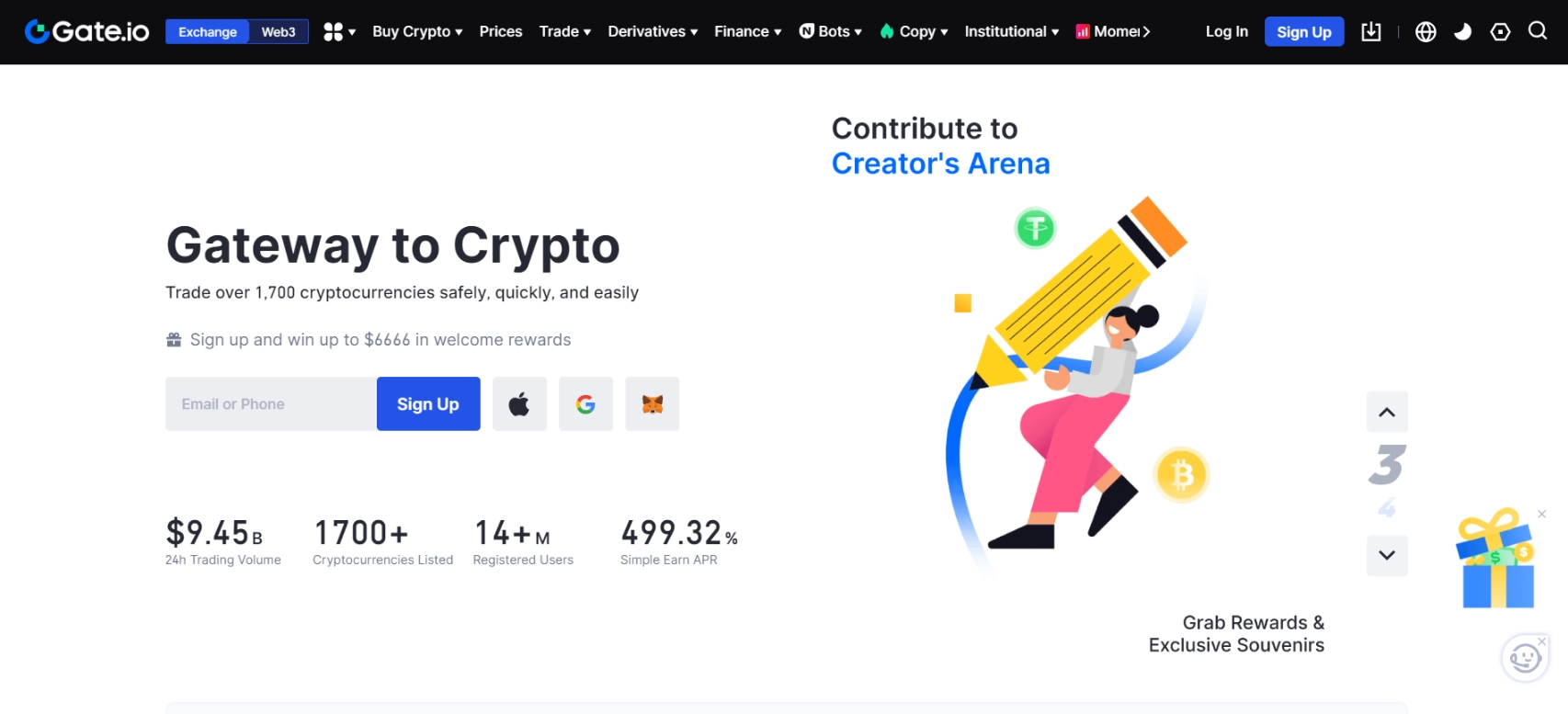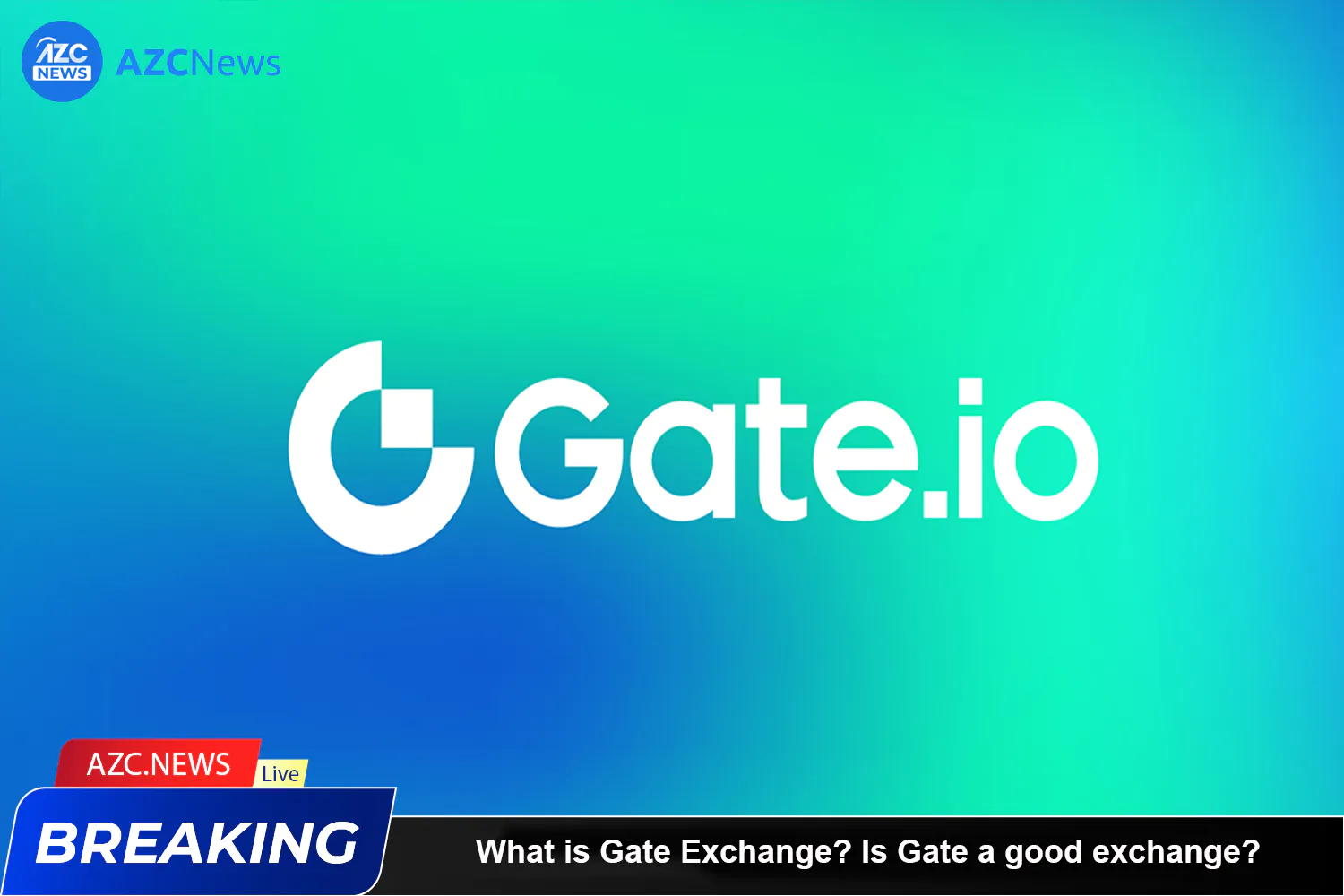What is Gate Exchange?
Originating in 2013 under the name Bter.com in China, Gate.io has undergone a challenging journey to become one of the world’s leading cryptocurrency exchanges. When the ban on cryptocurrencies hit in 2017, Gate.io decided to pivot its history by leaving its homeland and re-emerging under a new guise – Gate.io.

Focusing on developing cryptocurrency trading services, Gate.io quickly rose to become one of the industry’s “giants” with massive trading volumes. The year 2019 marked an important milestone when Gate.io successfully raised $83 million through its own GT token.
Registered in the Cayman Islands, Gate.io currently has a global user community, although it does not serve some countries like the US, Canada, and Japan. However, with thousands of listed cryptocurrencies and diverse trading options, Gate.io offers a safe, rich, and exciting trading environment for both new and professional traders.
History and Development
- 2013: Gate.io launched as a pure cryptocurrency exchange, focusing mainly on popular cryptocurrencies like Bitcoin, Litecoin, and Namecoin.
- 2015: The exchange expanded services to the Ethereum platform and added many new coins, while also offering complex order types like limit orders.
- 2016: Gate.io became one of the leading exchanges in trading volume and number of users, also introducing interest-earning deposit services.
- 2017: Began offering margin trading services with leverage up to 100x.
- 2018: Opened European-style options and futures markets. Introduced Wallet.io.
- 2019: Launched Gate Chain and announced the development of the DeFi ecosystem.
- 2020: Released the Blockchain asset checking platform BlockInfo. User base exceeded 8 million.
- 2021: Gate.io launched the early-stage crypto venture fund Gate Ventures.
Initially with a limited number of users and a limited cryptocurrency offering, Gate.io has gradually expanded its services through each development phase, attracting more and more user interest and trust.
Gate.io Products
- Spot: Gate.io is an exchange that supports trading of over 1,400 different tokens and has over 2,500 different trading pairs (according to data from CoinMarketCap).
- Derivatives and margin trading: Gate.io provides a derivatives, futures, and options trading platform for most popular tokens with leverage up to 125x.
- Bots: Gate.io offers various trading bots, including Grid Bots, Average Cost Bots, and Passive Arbitrage Strategies.
- Finance: Gate.io provides a Finance feature to increase profits and earn additional income. This includes Lend & Earn, HODL & Earn, Gate Wealth, and more.
- GateChain: GateChain (GT) is a public blockchain focused on protecting on-chain assets and trading in decentralized markets.
- Startup: Gate.io provides a Launchpad for users to access newly listed projects on the exchange. This is also a platform for distributing airdrops to users.
- NFT marketplace: Gate.io has an NFT marketplace for users to more easily access NFT collections.
- P2P trading: Gate.io provides a P2P trading market, allowing users to quickly and conveniently buy crypto from Gate.io-approved merchants.
- Express, Debit/Credit card and bank transfers: Gate.io integrates payment methods such as Debit/Credit cards and bank transfers for users to purchase crypto assets.
- Trading tools for institutions: In addition to products for individual users, Gate.io provides dedicated products for institutions and businesses.
Related: What is BingX Exchange? What are the Key Highlights of BingX Exchange?
Evaluation of Gate.io Exchange
Advantages of Gate.io:
- Supports over 1,700 cryptocurrencies and over 3,000 trading pairs.
- Offers diverse trading forms such as spot, leverage, derivatives, copy trading, and many other financial products to optimize capital and generate profits.
- Gate Moments functions like a social network, providing news, events, and crypto knowledge, allowing users to interact through posts, live streams, and chat.
- 24/7 customer support team to quickly resolve issues.
- P2P (Person-to-Person) trading feature allows users to trade directly with each other, including both crypto assets and fiat currencies.
- Gate Web3 Wallet provides an extension and mobile app version for users to interact with dApps and participate in DeFi activities.
- Gate.io is certified 100% Proof of Reserves for user assets, ensuring safety and security.
Disadvantages of Gate.io:
- The trading fee on the exchange is 0.3%, higher than the average of other cryptocurrency exchanges.
- Gate.io has been hacked multiple times in the past, and although security technology has been upgraded, there are still doubts about the platform’s safety and security for users.
- Limited information about the exchange’s development team, making it difficult to assess their experience and expertise.
Fees on Gate.io
Gate.io applies the following trading fees:
- Spot trading: Fees range from 0% to 0.2%, depending on the cryptocurrency.
- Wallet withdrawals: Average fee is 0.0005 BTC or equivalent.
- P2P (Person-to-Person) trading: Free, with fees optionally set by the seller.
- Margin trading: Fees range from 0.02% to 0.1%, depending on the leverage used.
- Options, perpetual futures, CBBC (Coin-Margined Bitcoin Bear Certificate) trading: These trading types have separately listed fees.
Additionally, Gate.io provides other services like copy trading and international payments, which may incur additional fees.
For VIP customers, Gate.io offers trading fee discounts based on VIP level and trading volume. The exchange also provides various payment methods to minimize incurred fees.
You can check the trading fees of Gate exchange here. gate.io/fee
Conclusion
Overall, Gate.io is a fairly good cryptocurrency exchange geared towards general users and retail investors, with a simple interface, competitive trading fees, and a diverse offering of cryptocurrencies. However, professional investors may want to consider more advanced features, higher trading volumes, and greater trustworthiness on larger exchanges.
After reading “What is Gate Exchange? Is Gate a Good Exchange?“, do you understand Gate.io? If not, leave a comment below to have your questions answered!












Actually this project has been consistently indicative and transparent
I don’t understand.